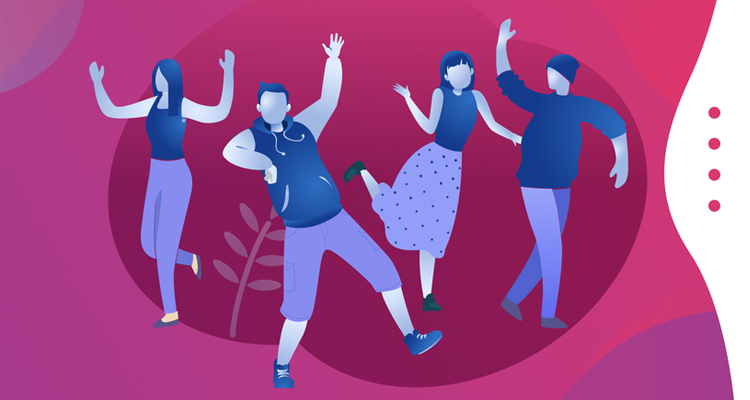Youth has its own natural attributes- energised physique makes everything seem easy and accessible, cognitive intelligence paves the path. Hence, innovative ideas develop and find implementation. The enhanced standards of education and introduction of science and technology adds to their efficiency making them charismatic workers. However, the other side of the coin presents a different picture. The youth is the embodiment of rigid, inflexible stubbornness. They lack in patience and experience. As such the rare gifts and natural talents are recklessly wasted. The abundance of glamour and pleasures make time slip away unnoticed. The counselling of the venerable class goes unheeded. It would be well to understand that the young generation is immature and cannot decide which path to adopt and which to abandon. The role of parents, teachers and society together with the standard of education are the deciding factors that make the young people to utilize fruitfully or to waste heedlessly the wealth of youth.
Young people, as opposed to the senior citizens, possess the potentials to bring about positive transformation in societies, to write success stories and to add to the aesthetic world by creative intervention, provided that their natural instincts and strengths are directed and channelized properly. Young people bring an end to age old conservative thoughts, dogmas and social evils.
The greatest barrier in social progress is ignorance and age old conservative thoughts. It is the young group that can help to eradicate these.
In many of the lesser developed societies, we still find gender-based bias, early marriages, dowry deaths, and child labour as highly prevalent. Despite attempts made by national and international organizations active in this direction, these enigmatic features continue to shame humanity. The young generation can do a lot to clean the society of such evils. They have the insight to comprehend the problem, the ability to find a solution and also the strength to have them implemented. There are many examples that show the revolutionary attitude of the millennials to wage a war against social evils. History has evidence of major changes brought through youthful initiatives and influences. As the young freedom fighters could achieve Independence for their country, today’s youth can free the societies of its foes in the shape of evils. The millennials extend support to social well- being through modern thoughts and innovative functioning
Young people today are successful entrepreneurs and social activists. They can not only revolutionize the digital scene but can also help fight against pollution, conserve natural resources and eradicate poverty. The trend of entrepreneurship initiated by Steve Jobs, Bill Gates and Mark Zuckerberg has paved the way for new generation of kids. Kevin Systrom and Mike Kreiger co-founders of the digital company, Instagram, are under 30; Shrawan Kumaran and Sanjay Kumaran, India’s young digital developers are only 12 and 14 years old and have co- founded Go Dimensions; Dylan Mahalingam, only at the age of nine in 2006, founded LilMDG’s , an organization in collaboration with the United Nations Millennium Development Goals; Madison Robinson, the fifteen year old entrepreneur from Texas, is making good profit in her clothing industry Fish Flop; and, Malala Yousafzai, the social activist fighting for education for all and the winner of Nobel Peace Prize in 2013, was only seventeen that time. These success stories suggest the triumph and intense utilization of youthful character, not its waste. Recent passion for technology has triggered a number of young people working in the direction of digital development and the sense of responsibility towards social issues is increasing day by day.
The young minds and hands possess creativity. A number of young people are showing their talents in the field of art, music, dance, drama, film making and sports, making this world a place of great grandeur. Talents in the field of art and literature are continued even as the folk arts are inherited and carried forward by the youth. Young fingers are engaged in creating masterpieces and instruments vibrate magic. Zachary David Zach Sobiech was an American rock singer who was suffering from cancer in 2012; instead of being disheartened by his eminent mortality he wrote songs and gave performances for his near and dear ones and his greatest hit, Clouds, became a You Tube sensation; his music, after his passing away, continues to motivate people to live their life to the fullest. Missy Franklin won Six Gold medals in 2012 Olympics but turned down her financial endorsement to continue her college education. Such talents are no doubt rare, but they, never the less belong to the young.
The role of performance arts, fine arts, folk arts, writings enriches the aesthetic wealth of the globe, adding a soulful satisfaction to human existence. Such young people who are conscious, conscientious and creative, constitute a smaller percentage of the entire mass. The majority of the young generation waste their time and talent in a callous search for momentary pleasures.
More often than not they do not listen to their guardian’s advice and do as they will. Having no respect for the time they let opportunities slip by. Nomophobia is the most widespread ailment of modern youth who cannot survive without their cell phones. Late night parties, friend circles, movies and careless gallivanting are symptoms of the rich while the less affluent take resort to cheap wines, drugs, abuse and violence. They fail to realize their more responsible roles in social development as imposed on them by the demographic transition and dependency ratio. According to the most recent demographic projections, which suggests an increase in the percentage of aged people and a decline in the percentage of the young, the youth will be under greater social and moral pressure of the greybeards. It is ironical that by the time a sense of realization will dawn upon them they will be too senescent for any useful activity. Most of the young population either misuse their potentials or remain idle, undisciplined and violent.
There is a tremendous burden on the young generation and the factors of insecurity and unemployment add to their adversities. Lack of proper guidance and the exposure to technology- social media and easy communication modes of cell phones- deviate them from their path. If they lack the vision to recognise their potentials and appear to be wasting their youth, it is not entirely their fault. Their performances need to be appreciated, their problems require to be sorted out and their trust has to be won by the elders and the societies promoting their participation. Today young people need to be empowered. If these conditions are met, the young will make the best use of their youth.
The young people are equipped with abilities to function wonderfully. They are doing so in various fields. But, there are a number of young people, moving towards senile ageing, without noticing the important fact that time was slipping away silently, like sand through the gaps between fingers.
Problems of unemployment, insecure future, family burden and immense exposure to dazzling distractions of modernity are preventing the young from realizing their goals and prompting the wastage of youth.



